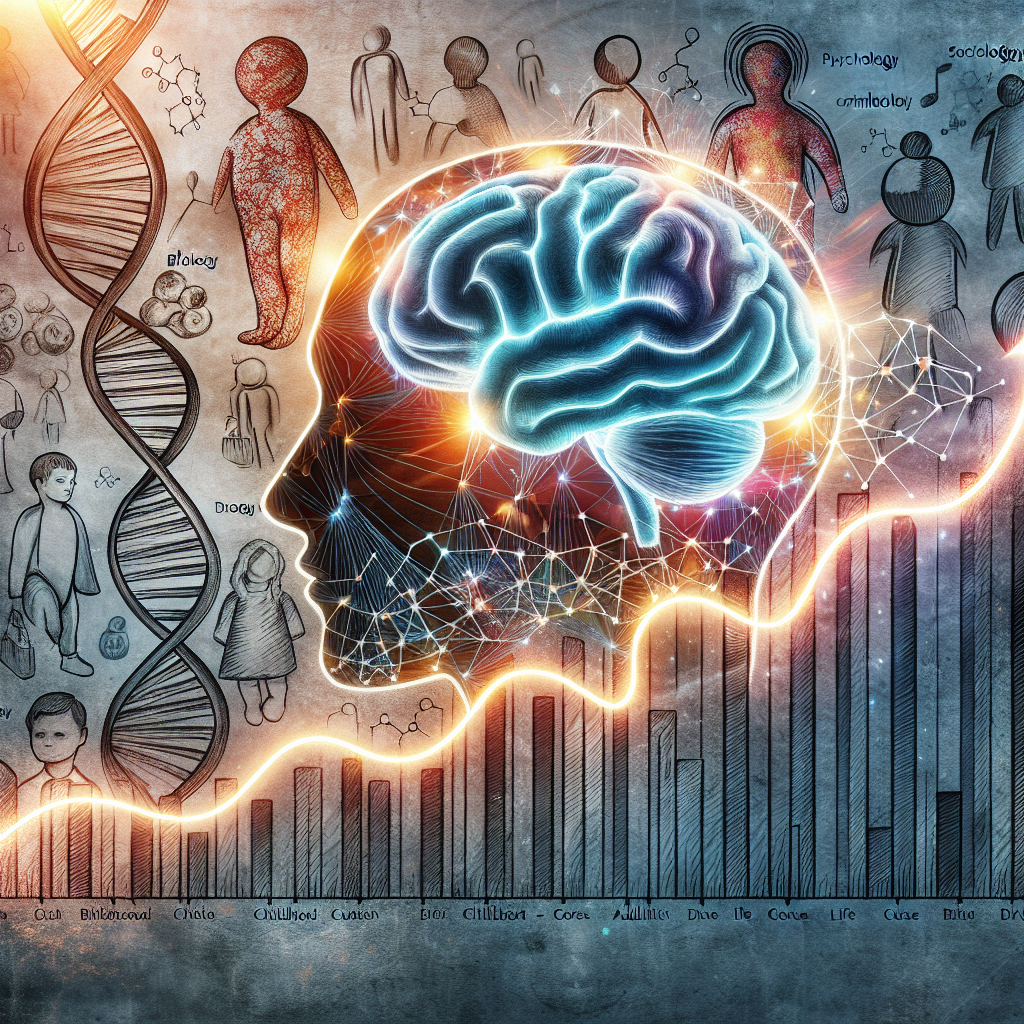Introduction
Imagine a world where the roots of criminal behavior are fully understood, enabling us to guide at-risk individuals toward constructive paths rather than criminal ones. The phrase "Tracing the Trajectory: Understanding Life Course Criminality Through a Biopsychosocial Lens" encapsulates a crucial approach to exploring criminality’s origins and potential solutions. This comprehensive article delves deep into how biological, psychological, and social factors intertwine to influence criminal behavior across an individual’s life span. This exploration not only aids researchers and policy makers but also cultivates awareness among the general public about the complexities of crime prevention.
The Biopsychosocial Model: A Holistic Approach
What is the Biopsychosocial Model?
The biopsychosocial model integrates insights from biology, psychology, and social context to explain human behavior, including criminality. This holistic approach emphasizes that no single factor can explain why individuals engage in criminal behavior; instead, it necessitates a multifaceted understanding.
Table 1: Components of the Biopsychosocial Model
| Dimension | Aspects Considered |
|---|---|
| Biological | Genetics, Neurobiology, Physical Health |
| Psychological | Personality traits, Mental health issues, Cognitive development |
| Social | Family background, Community environment, Cultural norms |
Life Course Theory
Life course theory posits that criminal behavior is not static but evolves through various stages of life influenced by unique experiences and relationships. It looks beyond childhood to understand how life transitions—like school, work, and relationships—affect behavior.
The Biological Lens: Genetics and Beyond
Genetic Factors Influencing Criminality
Research has indicated that genetics can play a role in predispositions toward criminal behavior. For instance, studies involving twins have shown that identical twins are more likely to share similar criminal behaviors than fraternal twins.
Case Study: The Minnesota Twin Study
In a landmark study performed at the University of Minnesota, researchers found that genetic factors accounted for about 50% of the variation in antisocial behavior. This significant finding suggests that interventions need to focus on both genetic predispositions and environmental factors.
Neurobiological Influences
Neurobiology also contributes to understanding criminality. Brain structure and function impact emotional regulation and decision-making abilities.
Case Study: The Amygdala and Criminal Behavior
Research has shown that individuals with reduced amygdala volume experience heightened impulsivity. This aligns with crime statistics indicating higher rates of violent crimes among individuals exhibiting impulsive behaviors.
The Psychological Lens: Personality and Mental Health
Personality Traits Linked to Criminal Behavior
Certain personality traits, such as high levels of impulsivity or low conscientiousness, contribute to a higher likelihood of criminality. These traits influence one’s ability to make sound decisions and empathize with others.
Mental Health Disorders
Mental health issues, such as PTSD, schizophrenia, or bipolar disorder, can significantly influence criminal behavior. Understanding this connection is vital for developing effective intervention strategies.
Case Study: Mental Illness and Recidivism
The Vera Institute of Justice found that individuals with untreated mental health issues are more likely to reoffend. This underscores the need for integrated mental health services within the justice system.
The Social Lens: Environment and Relationships
Family Dynamics
Family instability and a history of criminality within families can set the stage for future criminal behavior. Parental involvement and monitoring are crucial for steering children away from a life of crime.
Community Environment
Neighborhoods characterized by poverty, high crime rates, and a lack of resources can perpetuate criminal behaviors. Understanding how social environment shapes behavior helps policymakers in crime reduction efforts.
Table 2: Community Impact on Crime
| Factor | Impact on Crime Rate |
|---|---|
| Economic Conditions | Higher poverty → Increased crime |
| Social Cohesion | Lower community ties → Increased crime |
| Educational Opportunities | Better education → Lower crime |
Interventions: Bridging the Gaps
Early Intervention Strategies
Early intervention plays a crucial role in redirecting at-risk individuals. Programs focusing on social skills, emotional regulation, and educational support have shown promising outcomes.
Multi-Systemic Therapy (MST)
MST is a family-focused therapy designed to address the multiple systems impacting a juvenile’s life. Communities leveraging MST have observed reduced recidivism rates among adolescents.
Conclusion
Ultimately, tracing the trajectory: understanding life course criminality through a biopsychosocial lens reveals the intricate web of factors leading to criminal behavior. It is essential to comprehend that prevention and intervention require a multifaceted approach that considers biological, psychological, and social elements. By fostering awareness, promoting early interventions, and enhancing community support, we can build a future where potential is recognized, nurtured, and transformed away from paths of crime.
FAQs
1. What is the biopsychosocial model of criminal behavior?
The biopsychosocial model integrates biological, psychological, and social factors to understand criminality, emphasizing that behavior is influenced by a combination of these elements.
2. How do genetics affect criminal behavior?
Genetics can predispose individuals to certain personality traits or behaviors associated with criminality, though the environment also plays a critical role in shaping actions.
3. What role does mental health play in criminality?
Mental health disorders can impact decision-making and impulse control, increasing the risk of criminal behavior. Treatment and support are essential for prevention.
4. How can communities reduce crime rates?
Communities can reduce crime by fostering social cohesion, improving economic conditions, and ensuring educational opportunities for all.
5. What are effective intervention strategies?
Effective strategies include early intervention programs targeting at-risk youth, family therapy approaches like Multi-Systemic Therapy, and community support initiatives.
By understanding and tracing the trajectory of life course criminality through a biopsychosocial lens, we empower ourselves to enact meaningful change and encourage healthier future generations.

